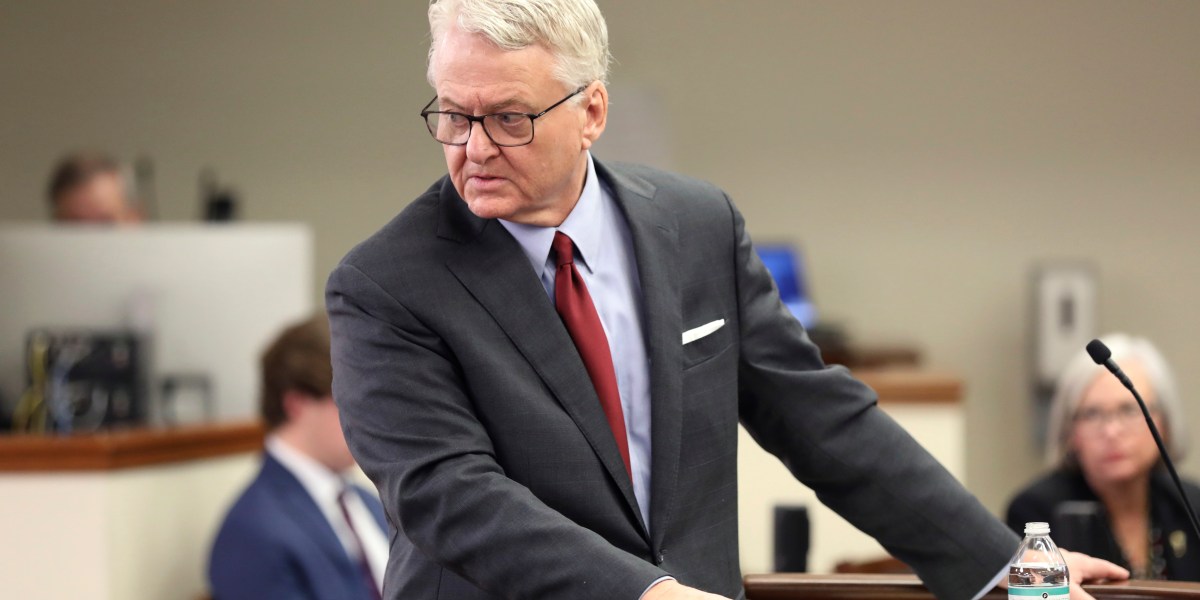- Getting fired for dressing inappropriately is so 2024. Now, Gen Z and young millennial workers are ditching the crop tops and “office siren” looks in exchange for a Steve Jobs-style daily uniform—but experts say it won’t make anxious employees any more productive.
It’s not just Apple’s Steve Jobs who liked to wear the same outfit on repeat. Now, Gen Z and young millennials are getting in on the productivity hack.
Over on TikTok, @corporateagonyaunt shows off the grey- and black-hued outfits that made up her winter “work uniform rotation.” Of course, it’s not an actual uniform that her boss has consigned her to wear.
Instead, she shares: “I have no time for decision fatigue and the destruction it causes.” So the U.K.-based commercial rotates a small collection of work outfits, consisting mostly of jeans, a black blazer, and a long coat.
Others are being even more restrictive: “So I wear the same exact outfit every single day to work. Yes, it’s really Steve Jobs-coded,” a 28-year-old who goes by @metzcampos agrees on the video platform.
“The crazy part is, no one cares, as long as I’m not showing up to the office with bad hygiene and the clothes that I have are clean and I’m presentable, nothing else really matters.”
Others have created their own “Steve Jobs look”—a reliable uniform to turn to, not every day, but on those mornings where you’re in a rush to get to work and feel too overwhelmed to string something smart together.
“I recently saw a TikTok about finding your Steve Jobs outfit, and I realized, Wait, I have one. I live, breathe, die in Oxford shirts,” @bykwezi echoes.
And it’s not just for work. The young influencer and fashion designer says she wears her trademark Oxford shirt to everything: If I’ve got a meeting, it’s an Oxford shirt. If I’m going to the airport, it’s an Oxford shirt and some joggers. If I’m going on a night out, it’s an Oxford shirt and a mini skirt. “
Likewise, towards the end of last year, a photo of nearly identically dressed Gen Z women on a night out went viral.
“When did all the girls start dressing exactly alike?,” a millennial New Yorker took to TikTok earlier this week to ask her followers. “It’s giving uniform. Last night, I was sitting at a bar, and I saw 10 girls, a gaggle of girls walking together, and they looked identical… What’s going on? Have people not heard of personal style?”
Gen Z’s work attire revolution
Work attire has been a hot topic ever since Gen Zers joined the workplace during the pandemic; they were onboarded on Zoom and worked from the sofa in sweatpants, before having to navigate the complexities of in-person working sans any prior experience.
“We’ve seen the younger generation express some level of confusion about what to wear for work, so a uniform can seem more simple, more streamlined, and less risky in an environment that might feel new and unfamiliar,” Eloise Skinner, author, psychotherapist and founder of The Purpose Workshop tells Fortune.
“This might especially be the case for a generation that missed out on early in-office work experience opportunities due to the pandemic’s impact on working from home, and who might only be spending a few days in the office every week.”
Unlike the assumption that an entire generation has lost their sense of personal style, the “uniform” trend which started to come to the fore last year, comes swiftly after being accused of not knowing how the dress for work.
Whether it’s wearing the same safe outfit as their peers or sticking to a Steve Jobs daily uniform, is it really a surprise that the generation would rather err on the side of caution? Last year, a staggering six in 10 employers admitted to firing Gen Z workers just months after hiring them—the bosses in question cited young workers’ inappropriate fashion choices as one of the key reasons for their sacking.
“With layoff fears and economic uncertainty looming, it’s not uncommon for individuals to gravitate toward structure and routine for comfort,” Amanda Augustine, a certified career coach at the careers platform, resume.io explains to Fortune.
“By developing a consistent morning routine—including a standard “work uniform”—young professionals are finding ways to feel more in control of their careers, even when other elements may feel uncertain.”
Essentially, Gen Z’s uniform is deeper than a fashion trend—it’s a desperate attempt to feel secure in the current climate where inflation is still stubborn, a recession is on the cards, job openings and salary hikes have dried up, the house market is exceedingly out of reach, and there’s a constant fear of being laid off.
Even American Eagle Outfitters CEO Jay Schottenstein has taken stock that Gen Zers are becoming increasingly risk adverse in their shopping choices because of economic anxiety.
“Not just tariffs, not just inflation,” Schottenstein noted earlier this month. “We see the government cutting people off. They don’t know how that’s going to affect them. And when people don’t know what they don’t know—they get very conservative.”
Plus, work uniforms kill decision fatigue
Despite being often named as the inspiration behind the fashion trend, it’s not just Steve Jobs that liked consistency. CEOs love their routines—and their affinity for daily rituals goes well beyond their outfit choices.
On a recent episode of Table Manners With Jessie and Lennie Ware, Apple CEO Tim Cook revealed that he follows a strict schedule, including waking up around 5 a.m. each day, before eating lunch and dinner at the same cafeteria. “I typically go for the fish,” he said.
Brian Niccol, former CEO of Chipotle and current CEO of Starbucks, told Fortune that he wakes up around 5:45 in the morning, has a cup of coffee and a cookie, works out around 7 a.m., has a shake or eggs and sausage before work each morning.
“I look to build a lot of consistent routines,” Jack Dorsey, CEO of Block and cofounder of Twitter, echoed back in 2015. “Same thing every day,” he added, explaining his days start at 5 a.m. and end at 11 p.m. and involve regular meditation, a strict workout schedule, and a five-mile walk to work.
Now, young new hires are catching on and reaping the benefits. As @selfpaidjade explained on TikTok, she’s “been living in matching sets” since she learned how it helps global leaders save brain space. “Decision fatigue is the idea that every decision we make takes mental energy, so reducing trivial choices (like what to wear) conserves it for critical tasks.”
Unlike many of the productivity hacks you can find on social media, this one isn’t a gimmick—experts told Fortune that finding a work uniform really does help conserve brain power for more important decisions later in the day.
“Making seemingly small changes to your work routine—like establishing a standard work uniform—can lead to significant gains in brain space over time,” Augustine says, adding that the more trivial decisions you can cut from your life, the less mental energy you’ll waste.
“Eliminating small, repetitive choices reduces mental and emotional strain, which in turn leads to greater focus, increased productivity, and better decision-making throughout the workday.”
But, one expert warns the hack won’t work for people who are stressed about their appearance—rather than the time it takes to find something to wear.
“In my experience, some people are anxious and worry obsessively about their appearance, and others simply do not,” Dr Claire Taylor, head of the Nottingham Business School human resources management department, says.
For people with low self-esteem, she adds, “having a uniform or simple dress code for work may make little difference.” Essentially, you’ll likely still waste brain space worrying about how you look in your “Steve Jobs look”.
This story was originally featured on Fortune.com
Source link


 Entertainment8 years ago
Entertainment8 years ago
 Politics8 years ago
Politics8 years ago
 Entertainment8 years ago
Entertainment8 years ago
 Entertainment8 years ago
Entertainment8 years ago
 Tech8 years ago
Tech8 years ago
 Tech8 years ago
Tech8 years ago
 Tech8 years ago
Tech8 years ago
 Politics8 years ago
Politics8 years ago






